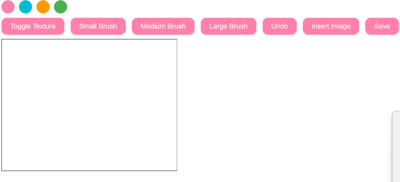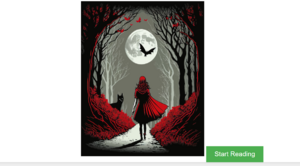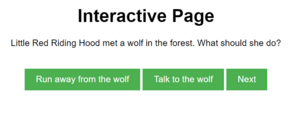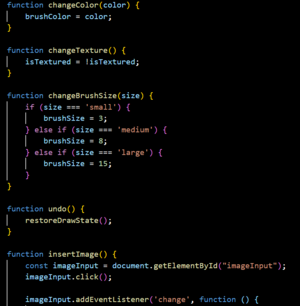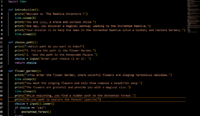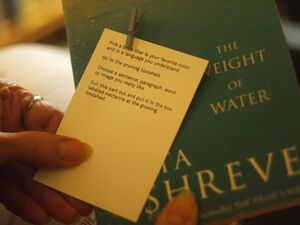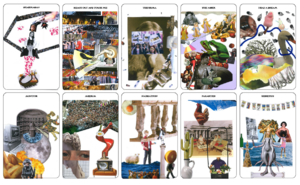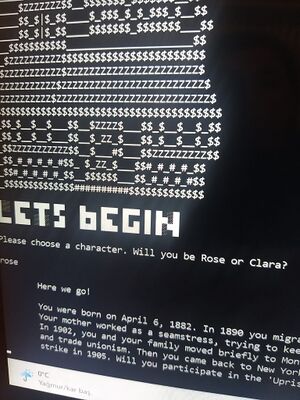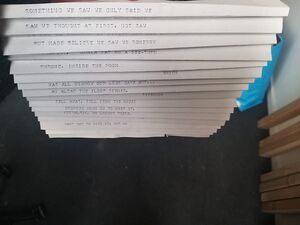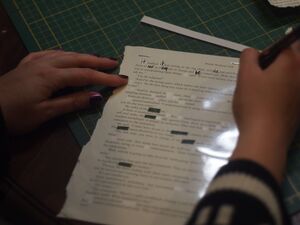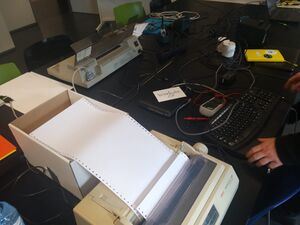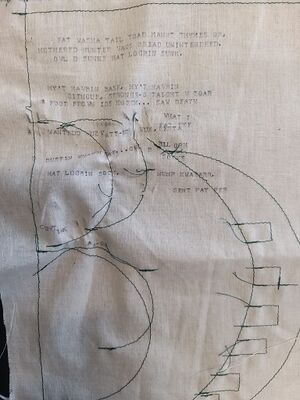User:Suzan/Proposalirmak: Difference between revisions
No edit summary |
|||
| (3 intermediate revisions by 2 users not shown) | |||
| Line 16: | Line 16: | ||
[[File:Screenshot 2023-11-26 224950.png|thumb|interactive story rapid prototype with little red riding hood|left]] | [[File:Screenshot 2023-11-26 224950.png|thumb|interactive story rapid prototype with little red riding hood|left]] | ||
[[File:Screenshot 2023-11-26 225825.png|thumb|little red riding hood |left]] | [[File:Screenshot 2023-11-26 225825.png|thumb|little red riding hood |left]] | ||
[[File:Textedit.png|center|thumb|400x400px|Using foreign object and text edit to be able to rewrite on an svg]] | |||
[[File:WhatsApp Image 2023-11-24 at 19.01.58 af6e2af1.jpg|center|thumb|interactivity with knots prototype]] | [[File:WhatsApp Image 2023-11-24 at 19.01.58 af6e2af1.jpg|center|thumb|interactivity with knots prototype]] | ||
[[File:Screenshot 2023-10-18 150809.png|thumb|drawing pad coding excerpt]] | [[File:Screenshot 2023-10-18 150809.png|thumb|drawing pad coding excerpt]] | ||
| Line 44: | Line 45: | ||
[https://acrobat.adobe.com/link/review?uri=urn:aaid:scds:US:ad087ab4-f7cd-335b-aeae-1dbd553f4765 PORTFOLIO] | [https://acrobat.adobe.com/link/review?uri=urn:aaid:scds:US:ad087ab4-f7cd-335b-aeae-1dbd553f4765 PORTFOLIO] | ||
[[File:Other side of poem.jpg|thumb|three dimensional poem]]I believe making Wink is a strong chain that is linked to my interests and work.[[File:WhatsApp Image 2023-10-18 at 16.35.31 (1).jpg|none|thumb|knots and bends in stories]] | [[File:Other side of poem.jpg|thumb|three dimensional poem]]I believe making Wink is a strong chain that is linked to my interests and work.[[File:WhatsApp Image 2023-10-18 at 16.35.31 (1).jpg|none|thumb|knots and bends in stories]] | ||
I am trying to find a common ground where I can meaningfully mash up my ideas on creativity with children. Ideas of experimenting on the relation between storyteller and story; poetry and especially concrete poetry; the effect of voice and pause; differences of comprehension when reading out loud or from within and in general playing with language and phonetics. I think these are fun games to work in language and good to introduce to children because it is a thrilling perspective to language and grammar from what they see in school. | I am trying to find a common ground where I can meaningfully mash up my ideas on creativity with children. Ideas of experimenting on the relation between storyteller and story; poetry and especially concrete poetry; the effect of voice and pause; differences of comprehension when reading out loud or from within and in general playing with language and phonetics. I think these are fun games to work in language and good to introduce to children because it is a thrilling perspective to language and grammar from what they see in school. I believe its important for kids to see text as not something to be intimidated by but to play with and explore. So I will try to base the stories and activities in Wink, by keeping this in mind. | ||
[[File:P1019973.jpg|thumb|Editing done on book to be recycled (pruning toolshed)]] | [[File:P1019973.jpg|thumb|Editing done on book to be recycled (pruning toolshed)]] | ||
[[File:Dotmatrix.jpg|thumb|dot matrix printer we used to print the trasncribed image from the chosen book]] | [[File:Dotmatrix.jpg|thumb|dot matrix printer we used to print the trasncribed image from the chosen book]] | ||
| Line 52: | Line 53: | ||
The estimated timetable to make Wink is starting from 1st of August 2023 to end of June 2024. | The estimated timetable to make Wink is starting from 1st of August 2023 to end of June 2024. | ||
1. August to october will be used to define the scope and objectives of the prototype; making rapid prototypes; drafting a project plan and thinking of an outline according to preliminary research. | |||
2. November to january will be working on a detailed design brief; a platform frame where these elements of reading and writing can come together and writing of chapter 1. | 2. November to january will be working on a detailed design brief; a platform frame where these elements of reading and writing can come together and writing of chapter 1. | ||
Latest revision as of 10:27, 11 December 2023
PROPOSAL
WHAT?
A prototype of Wink, a web platform, hosting a creative writing and reading toolkit that enables children to make their own stories or read the stories they want from the existing library. This web platform is preferably for kids between ages 6-12, due to the interaction level these ages offer. Wink will be consisting of two sections: Reading and making. Reading part of the platform will be including a library of interactive stories written by me. This section is to merely enjoy reading/experiencing the already existing stories. Making section will be focused on altering an existing story in various ways or writing from scratch. The ways kids can alter the stories is through adding a jingle, reading out loud or adding sound effects on either the story they create or an existing one in library. Templates, keywords, prompts, images for creating a story will be available to help kids get started if preferred. Ideally, later on, the aim is to have a feature that enables children to share the stories they create with each other.
WHY?
The purpose of this platform is to encourage love for reading and writing from a young age and to boost creative thinking. It aims to make literature fun again through the idea of deconstructing and constructing a piece of text and narrative structures. Today, children are naturally drawn to technology. Therefore, instead of insisting that they only stick with reading traditionally published books and rewarding this action, Wink offers new and fun ways for reading and taking part in writing. It is important for children to grasp the proximity of reading and writing from an early age (Zhang, 2013). The platform leverages this interest to create an engaging digital platform that aligns with their interests.
I feel like there is an undiscovered territory in children’s literature. This is where children can be a part of reading and\or writing. There should be more creative options for kids except ebooks, games or hardcover picture books. What is the media inbetween an interactive ebook, ebook and a game? Are there common things that can feed each other in order to get children more interested in a story, without being told to read it as an assignment?
HOW?
The path to making Wink begin from reading articles on interactivity and child-computer interaction. The first two months were spent going through readings, finding a suitable age gap for the desired interaction and making rapid prototoypes for interactive content. Wink will need a specific design to make the platform user friendly and easier for children to navigate. I will design prototypes of an interface where children can easily navigate through reading and making. Following this, I will add the interactive stories, drawing pad and tools to be used in making section to be tried out in an interactive school in Rotterdam which I contacted. will be tried out. with the feedback gained from this workshop, I will revisit the prototype and proof it and make final touches for Wink.
WHO CAN HELP?
Throughout the process of making Wink, UX designer Zeynep Erol can specialize in creating intuitive and child-friendly interfaces that ensure a positive user experience., publisher Youngsunk Chi can be a mentor in digital publishing since he is with Elsevier. Manetta, Joseph, Marlois, Everest Pimpkin, XPUB GRAD Clara Gladell would be helpful to talk to along the whole provess for advice. Judith Good from The University of Amsterdam would be very helpful to consult to in terms of the perks of designing for kids, her video of a lecture about this is in the references. Child development specialists such as Jessica Taylor Piotrowski (Piotrowski, 2017) or Daisy J.H. Smeets (Smeets, 2013) can provide insights into age-appropriate content and activities that support cognitive and emotional growth.
RELATION TO PREVIOUS PRACTICE
Wink is highly related to my previous practice. My experiences through the years I was working as a children’s literature editor and translator in publishing houses in Turkey made me realize certain gaps and pushed me to research new ways to engage children with literature. Most of the books published were lacking the involvement of very important aspects in reading experience such as voice, acting, inclusivity, role-play and word puns. I think this is because children’s publishing is stuck in a loop of traditional. Another gap is that childrens’ personal interests aren’t taken into consideration in schools and they are expected to enjoy and be enthusiastic about ‘reading time’ where they have no involvement in the book choosing process or the reading itself. These limitations are I think worth thinking about.
Personally in my practice I am involved in creative writing, deconstruction and construction of narratives, active reading skills, anecdotes, performative reading, media archaeology and inscription. I have been thinking about making a platform such as Wink since 2017 when I was working in a publishing house. Now being a part of XPUB, I can see what I can do or can’t do, or can do with more technical support.
The previous special issues we worked on collectively were great help in shaping my interest in new ways of publishing and gave me more courage to share my writing. Throughout last year I contributed in SI19 (How Do We Library That?) with a scanner and transcriber where the participant can work on a transcribed text and alter it using their creativity. The theme was to redefine gardening terms such as pruning, grafting and cutting to work with text and to deauthorize the author in a sense. The instructions were written on cards to cross out workd that you dont like or to replace puntuation on a page to alter the meaning. So we used a scanner to scan a page from a book, trasncribe the image to text and print it instantly with dot matrix. The pages were edited, censored or rewritten by people and then printed as new text.
For the second SI (Console), I got to practice new ways of storytelling and how to redefine a personal expeience like Tarot, into a collaborative activity to speak about collective trauma. For this, we made a deck of cards using collage tecnique and wrote steps on how to use the cards. The collages were made from photographs of events that shaped my political view and traumatic memories from my country as well as cultural references. The dice in this card game, gives you a way to tell the story and evereyone who plays the game contributes to telling the story. Which I am mainly focusing on making now with my graduation project.
The last Special Issue was also a moment that clarified my interests. The introduction to concrete poetry, ways of inscribing and limitations to writing with the teletype was very inspiring. This made me think of new ways to write and how poetry could be taught to kids from an early age. Working with sound and text was very inspiring that made me think of adding the feature of making a jingle for a story in Wink.
My portfolio is very much about belonging and destructing meaning and logic, constructing new narratives. Which had an influence on the work Ive done in XPUB and in general.
I believe making Wink is a strong chain that is linked to my interests and work.
I am trying to find a common ground where I can meaningfully mash up my ideas on creativity with children. Ideas of experimenting on the relation between storyteller and story; poetry and especially concrete poetry; the effect of voice and pause; differences of comprehension when reading out loud or from within and in general playing with language and phonetics. I think these are fun games to work in language and good to introduce to children because it is a thrilling perspective to language and grammar from what they see in school. I believe its important for kids to see text as not something to be intimidated by but to play with and explore. So I will try to base the stories and activities in Wink, by keeping this in mind.
TIMETABLE
The estimated timetable to make Wink is starting from 1st of August 2023 to end of June 2024.
1. August to october will be used to define the scope and objectives of the prototype; making rapid prototypes; drafting a project plan and thinking of an outline according to preliminary research.
2. November to january will be working on a detailed design brief; a platform frame where these elements of reading and writing can come together and writing of chapter 1.
3. February to April will be mostly working on the content, interactive stories and writing prompts to go on the platform. Testing the prototype with a group of kids at the target age. Finishing up with writing the thesis. 4. March to May making the prototype better.
5. May to june will be the finalizing touches and completing the prototype.
RELATION TO LARGER CONTEXT
Throughout my childhood, I spent a lot of time in rehabilitation centres for kids because this is my mothers profession. I had the privilege to make many friends and closely saw how my mother worked with dyslexic, mentally or physically challenged kids. I remember my mom being desperate to find content and materials for education. Me and my mother used to create our own content and reading/learning materials to use at the rehabilitation center. When I think of these moments now, I can see that they are very much related to what I would like to research now.
Years later when I began my bachelor in communication and design department, my interest in literature and media was already ignited. By this time I was also having reading groups in the rehabilitation centre and had some idea on how to create a spark in the kids eyes.
While I was working with kids, seeing how quickly they respond to autonomous activities and interactive play based learning environments, I searched for interactive publishing startups and companies. This was when I saw Piboco, an interactive picture book publisher. Then I saw noveleffect, bookr and other attempts in migrating the reading experience to where kids gaze at; the machine aka computer. I began my study in child development and discovered theories on learning and interactivity, including playbased learning by Vygotsky which claims children learn through play, and that play is a form of sociocultural learning (Vygotsky, 2022). His work has become an integral part of contemporary psychology. Besides these, multiliteracies theory (Cope, Kalantzis, 2009) and Technological Pedagogical Content Knowledge (TPACK) (Koehler, 2017) which attempts to identify the nature of knowledge required by teachers for technology integration in their teaching, while addressing the complex, multifaceted and situated nature of teacher knowledge (Santos, 2021) These are the main theories I am interested in.
But again. quite boldly, I was thinking that solely an interactive reading experience like in Piboco or Bookr is not enough to create the awe effect or spark the creativity. These were what I was inspired by around the time I applied for experimental publishing. Both to escape the limitations of publishing (especially in Turkey where literature is exposed to unbelievable levels of censorship) and to gain knowledge on how can the machine be a part of the world of books in a transcendental manner.
Clara Gladel and Everest Pipkin's works were also an inspiration and motivation to go forward. Discovering Scratch which help kids make stories using programming language and Dynabook by Alan Kay helped me grasp the wide world there is to discover in literature and technology.
Reading about the research on children’s interaction with tablets and gestures such as tap, slide or pinch made me understand ways of using these as features in a picture book. Where the physical action of flipping the page can be gestured as a tap in this digital world. Finding knots between toys, games and books became very fun and turned out to be a very wide world to explore.
bibliography
Alan Kay’s Dynabook (1968). Available at: https://www.youtube.com/watch?v=r36NNGzNvjo.
Cope, B. and Kalantzis, M. (2009) ‘“multiliteracies”: New Literacies, new learning’, Pedagogies: An International Journal, 4(3), pp. 164–195. doi:10.1080/15544800903076044.
Jessica Taylor Piotrowski: Insights into Youth, Media & Technology (no date). Available at: https://www.youtube.com/watch?v=NHi6fSNaKRQ.
Koehler, M. J., & Mishra, P. (2009). What is technological pedagogical content knowledge? Contemporary Issues in Technology and Teacher Education, 9(1).
Papert, S. (1993) Mindstorms: Children, computers and powerful ideas. New York: Perseus.
RD, L. (2000) Knots. Random House USA Paperbacks.
Santos, J. and Castro, R.D. (2020) ‘Technological Pedagogical Content Knowledge (TPACK) in action: Application of learning in the classroom by pre-service teachers (PST)’, SSRN Electronic Journal [Preprint]. doi:10.2139/ssrn.3661054.
Smeets, D. and Bus, A. (2013) ‘Picture storybooks go digital: Pros and cons’, Quality Reading Instruction in the Age of Common Core Standards, pp. 176–189. doi:10.1598/0496.13.
SO MANY ARTICLES! But willing to discuss my anecdotes on printer matter.
Valkenburg, P.M. and Piotrowski, J.T. (2018) Plugged in: How media attract and affect youth. New Haven, CT: Yale University Press.
Vygotsky’s theory (no date) RSS. Available at: https://www.structural-learning.com/post/vygotskys-theory#:~:text=Vygotsky’s%20theory%20suggests%20that%20each,integral%20part%20of%20contemporary%20psychology. (Accessed: 27 November 2023).
Williams, E. (2013) An anthology of concrete poetry. New York: Primary Information.


